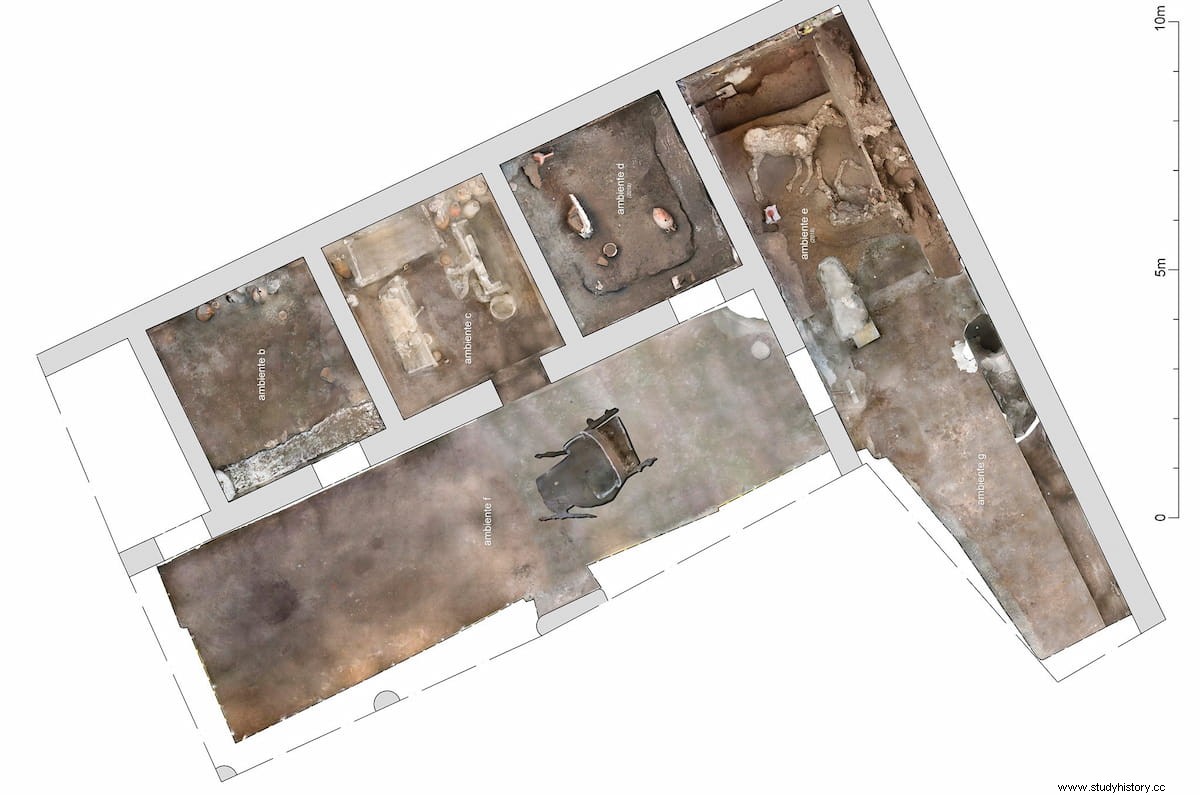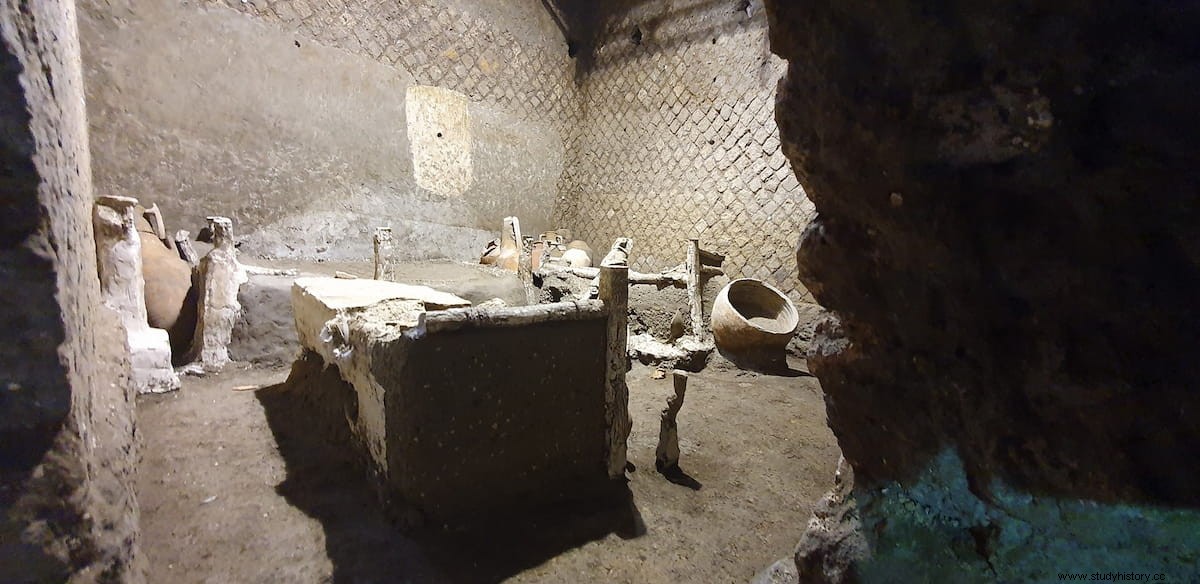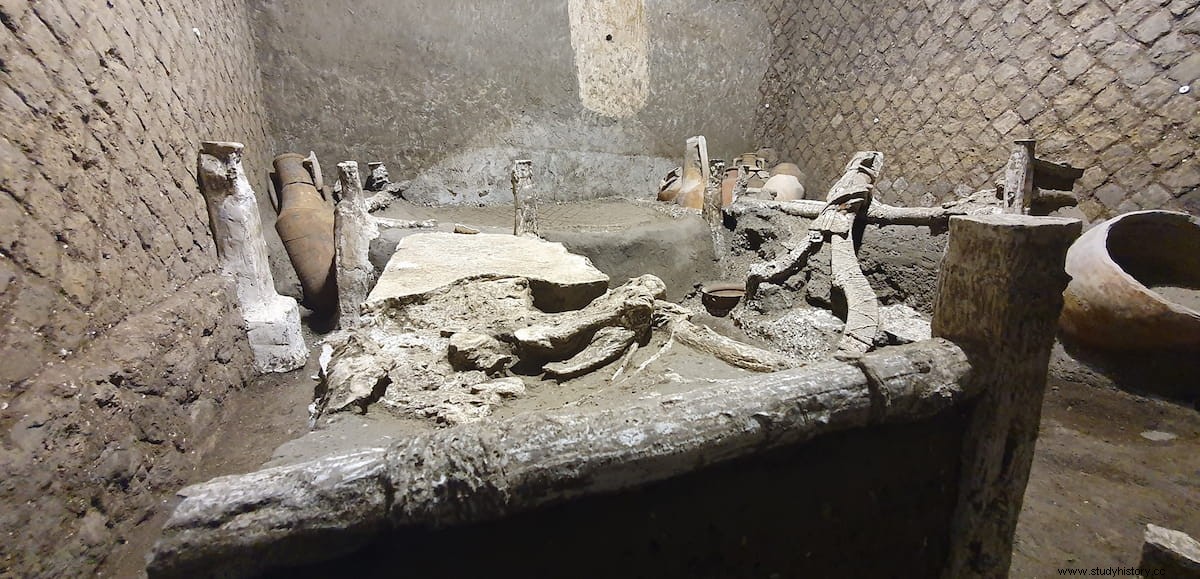Discoveries continue in Civita Giuliana, in the suburban villa north of Pompeii that has been excavated since 2017 and from which a ceremonial chariot and a stable with the remains of three horses have already come to light, of which it has been possible to make a mold, in the servants' quarters.
Now the context is completed with the latest discovery, a room for the slaves who worked in the town. An extraordinary glimpse into a part of the ancient world that normally remains obscure, the room offers a rare insight into the daily lives of slaves, thanks to the exceptional state of preservation of the surroundings and the possibility of making plaster casts of beds and other objects made of perishable materials that have left their mark on the cinerite that covered the old structures.

The discovery took place not far from the portico where, in January 2021, a ceremonial chariot was discovered, which is currently undergoing consolidation and restoration work, and not far from the nearby stable excavated in 2018.
It is one of the modest dwellings of the workers who were in charge of the daily work in a Roman villa, including the maintenance and preparation of the carriage.
In the room, where three wooden beds were found, in fact, a chest was found containing metallic and textile objects that seem to be part of the horse's trappings. In addition, a drawbar from a car was found leaning against one of the beds, from which a cast was made.

The beds consist of a few roughly worked wooden planks that can be assembled according to the height of the person using them. While two of them are around 1.70 meters long, one bed is only 1.40 meters long, so it could have belonged to a child.
The bed bases are made of ropes, traces of which are partially legible in the cinerite, and cloth blankets were placed on them, also preserved as holes in the ground and recovered using the tracing method.

Beneath the cots were some personal items, such as amphorae placed to preserve private possessions, ceramic pitchers, and the chamber pot. As well as serving as a bedroom for a group of slaves, perhaps a small family, as the child-sized cot suggests, the room served as a storeroom, as evidenced by the eight amphorae packed into the corners left free for this purpose.
It is a window to the precarious reality of some people who rarely appear in historical sources, written almost exclusively by men belonging to the elite, and who therefore run the risk of remaining invisible in the great historical accounts . – declares the CEO, Gabriel Zuchtriegel – It is a case where archeology helps us discover a part of the ancient world that we know little about, but which is extremely important.

What is striking is the narrowness and precariousness of this room, a cross between a bedroom and a warehouse of just 16 square meters, which we can now rebuild thanks to the exceptional conservation conditions created by the eruption of the year 79 .
This is, without a doubt, one of the most exciting discoveries of my life as an archaeologist, even without the presence of great “treasures”:the real treasure is the human experience, in this case of the weakest in society ancient, of which this room offers a unique testimony .
Once again, an excavation born from the need to protect and safeguard our archaeological heritage, in this case thanks to a fruitful collaboration with the Torre Annunziata prosecutor's office, has allowed us to add one more piece to our knowledge of the ancient world , affirms Massimo Osanna, General Director of the Pompeii Archaeological Park, under whose direction the excavation work began in 2017 – The study of this environment, which will be enriched by the results of the analyzes currently underway, will allow the acquisition of new and interesting facts about the living conditions of slaves in Pompeii and the Roman world .
